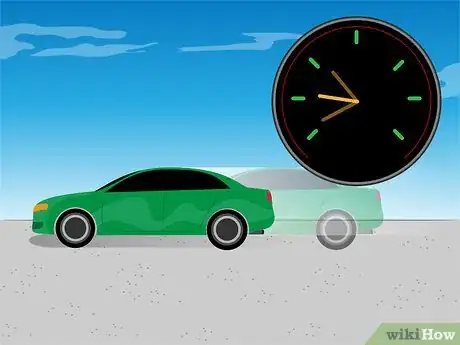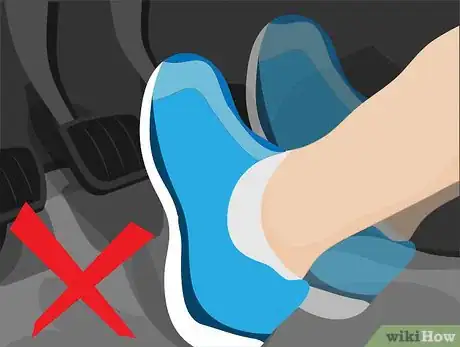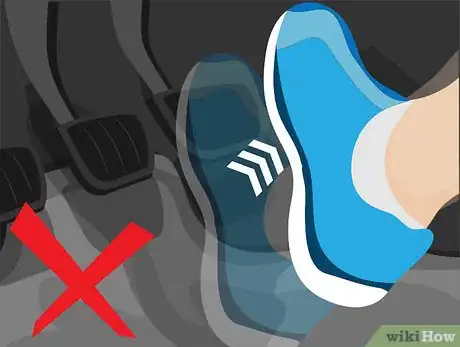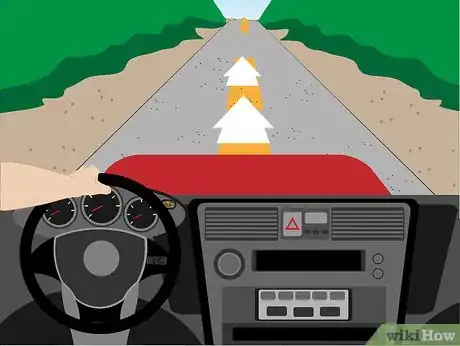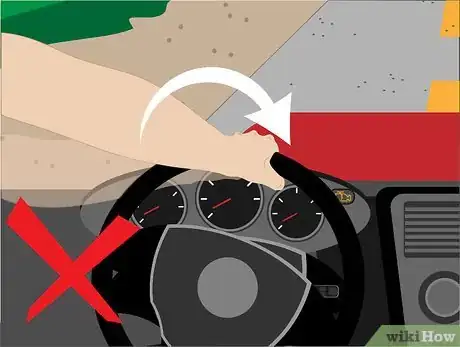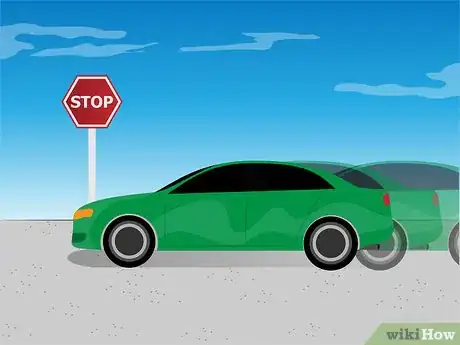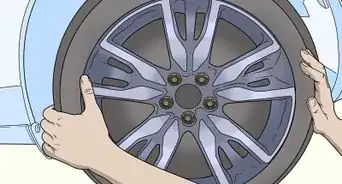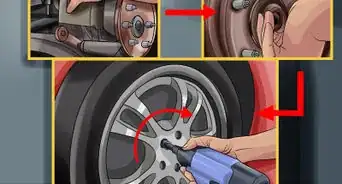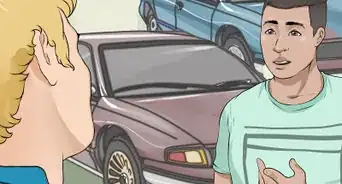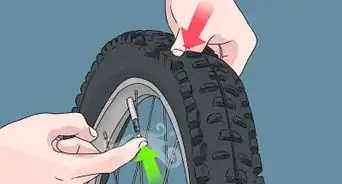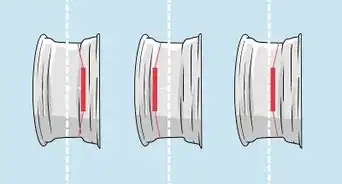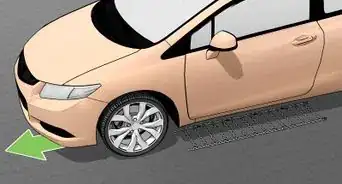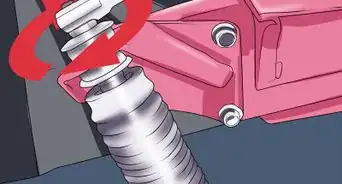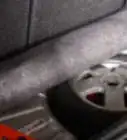This article was co-authored by Simon Miyerov. Simon Miyerov is the President and Driving Instructor for Drive Rite Academy, a driving academy based out of New York City. Simon has over 8 years of driving instruction experience. His mission is to ensure the safety of everyday drivers and continue to make New York a safer and efficient driving environment.
There are 7 references cited in this article, which can be found at the bottom of the page.
wikiHow marks an article as reader-approved once it receives enough positive feedback. In this case, several readers have written to tell us that this article was helpful to them, earning it our reader-approved status.
This article has been viewed 128,020 times.
There isn't a doubt that a tire blowout ranks the highest on any highway driver’s list of fears. With good reason, as a tire burst could lead to a complete loss of car control. With SUVs and MUVs, there is the possibility of a flip-over, too. A blowout is dangerous no matter how good a driver you are or how safe your car is. Try not to worry, though—we've walked you through exactly what you need to do in the event of a burst tyre.
Steps
Community Q&A
-
QuestionDo we have to do a wheel alignment after the burst?
 Community AnswerProbably. Tires pop with a lot of force, plus any distance traveled immediately after it blew probably put a hurting on your whole steering knuckle.
Community AnswerProbably. Tires pop with a lot of force, plus any distance traveled immediately after it blew probably put a hurting on your whole steering knuckle. -
QuestionHow can the life of a tire be extended, and what material should be used in manufacturing to prevent under-inflation?
 Logic Johnson LafontaineTop AnswererIf the tire is already at the end of its tread life, there is nothing that can be done. If you're looking for ways to reduce the wear on still-good tires, the main thing is keeping them well aligned. There is no unique material that prevents under-inflation. Your tire has room in it for x pounds of air pressure no matter how it's constructed. Run-flat tires do have thicker sidewalls that make the tire sag less if it is under-inflated (or losing air).
Logic Johnson LafontaineTop AnswererIf the tire is already at the end of its tread life, there is nothing that can be done. If you're looking for ways to reduce the wear on still-good tires, the main thing is keeping them well aligned. There is no unique material that prevents under-inflation. Your tire has room in it for x pounds of air pressure no matter how it's constructed. Run-flat tires do have thicker sidewalls that make the tire sag less if it is under-inflated (or losing air). -
QuestionWhat happens with an automatic when a tire bursts?
 Logic Johnson LafontaineTop AnswererSame thing as a standard. Your car forces you to regain control as it tries to veer to the side where the tire went. The moment of the blowout is the most dangerous because your car could easily swerve sharply and hit something. The trick is, the moment you feel it burst, you quickly jam on the gas (DO NOT TOUCH THE BRAKES), so you have more forward momentum. That way, the car is less likely to jerk itself off course. Once the initial loss of control is avoided, get off the gas (and stay off the brakes), hit your hazards and coast to a safe stop.
Logic Johnson LafontaineTop AnswererSame thing as a standard. Your car forces you to regain control as it tries to veer to the side where the tire went. The moment of the blowout is the most dangerous because your car could easily swerve sharply and hit something. The trick is, the moment you feel it burst, you quickly jam on the gas (DO NOT TOUCH THE BRAKES), so you have more forward momentum. That way, the car is less likely to jerk itself off course. Once the initial loss of control is avoided, get off the gas (and stay off the brakes), hit your hazards and coast to a safe stop.
Warnings
- Concrete roads might make the tire run hotter.⧼thumbs_response⧽
- It is recommended to take a break after every 90 - 120 minutes of driving. This refreshment stop will not only do the driver some good, but also allow the tires, brakes, clutch etc. to cool down. Give your car and tires a visual check during these breaks.⧼thumbs_response⧽
- If your tires are over 5 years / 40,000 kilometers (25,000 mi) old (lesser for performance rubber like the Eagle F1), you should consider replacing them. The older and more worn out your tire is, the higher the chance of a blowout.⧼thumbs_response⧽
- If a tire has suffered sidewall damage, get rid of it. Keep in mind that driving a considerable distance on a puncture can damage the sidewall.⧼thumbs_response⧽
- Avoid approaching the "speed rating" of your tire. If you do a lot of highway traveling, ensure that your tires have a rating well above your average highway speeds.⧼thumbs_response⧽
- Use tubeless tires. The old tube-type tires have a higher chance of a dangerous blowout. Good news is, tubeless tires are OEM fitment on nearly all passenger cars sold today, and the norm in the after-market too.⧼thumbs_response⧽
- Check the air pressure every week or fortnight. This way, a small puncture (also known to cause blowouts) will catch your attention.⧼thumbs_response⧽
- Never overload the vehicle. Ensure that your tires load rating (specified on the sidewall) and vehicle payload capacity are never exceeded.⧼thumbs_response⧽
- Use high quality tires from a reputable brand. Avoid cheap, unknown imports. In addition, never buy used tires or retread your old tires. It must be added that run-flat tires can be lifesavers in a blowout situation.⧼thumbs_response⧽
- If your car is equipped with poorly designed wheel caps, get rid of them. Some wheel caps can actually rub against the sidewall and damage it⧼thumbs_response⧽
- Don’t get temporary or shoddy puncture repair work done. The "mushroom and plug" type repair is the most recommended.⧼thumbs_response⧽
- Check the remaining tread depth (Coin Test for Tyre Wear checking) of your tires. Not only does additional tread depth help prevent punctures, it also greatly helps grip levels. If the tread has worn out, get a new set immediately.⧼thumbs_response⧽
- While tire sealants cannot prevent tire overheating (and eventual blowout), they can fix slow punctures and thus prevent under-inflation.⧼thumbs_response⧽
- Stability Control Programs (e.g. ESP) are lifesavers in a tire burst situation. Consider this when shopping for your next car.⧼thumbs_response⧽
- There is nothing more critical to safe driving than healthy tires. Visually inspect all tires (including the spare). If you spot any bulges or cuts, that is bad news. Tires can also get damaged by impact against curbs, dividers and large potholes.⧼thumbs_response⧽
- Under-inflation is the number one cause of tire bursts. Some studies suggest that it is responsible for 75% of all blowouts. Under-inflated tires suffer from excessive flexing and thus, overheating. Be disciplined in checking the air pressure of all tires (including the spare) before hitting the highway. Always check the pressure when the tires are cold (typically, less than 5 km of recent running). Invest in a high quality pressure gauge as petrol pump readings may be inaccurate.[6]⧼thumbs_response⧽
References
- ↑ https://www.youtube.com/watch?v=k5kq101nYSU
- ↑ https://www.allstate.com/blog/how-to-safely-handle-a-tire-blowout/
- ↑ https://www.idrivesafely.com/driving-resources/how-to/tire-blowout/
- ↑ https://www.popularmechanics.com/cars/how-to/a9354/what-to-do-when-your-car-gets-a-blowout-15851782/
- ↑ https://www.youtube.com/watch?v=Ej1XUAfOrEg
- ↑ https://www.popularmechanics.com/cars/how-to/a9399/why-blowouts-happen-and-how-to-avoid-them-15832078/
- http://www.team-bhp.com/safety/tyre-bursts-blowouts-how-handle-and-prevent-them - Original source, shared with permission.
